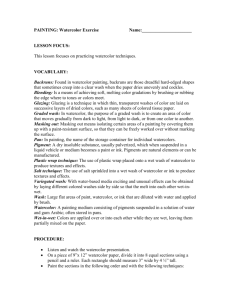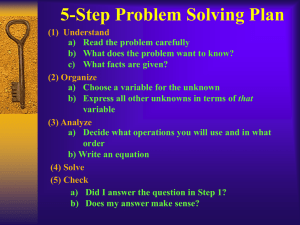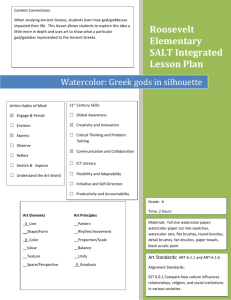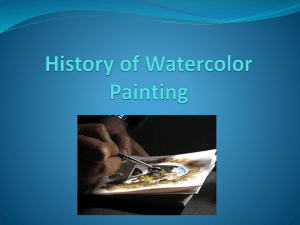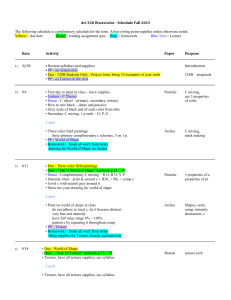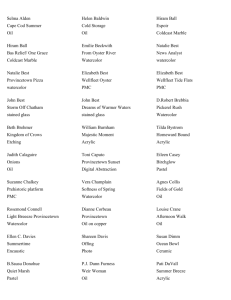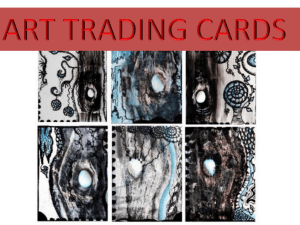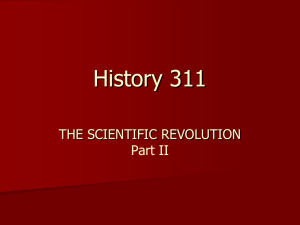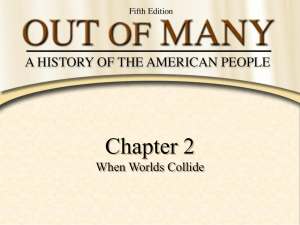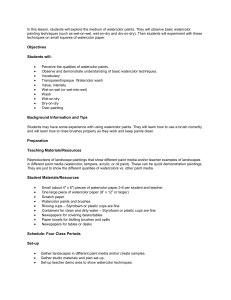Watercolor Vocabulary
advertisement
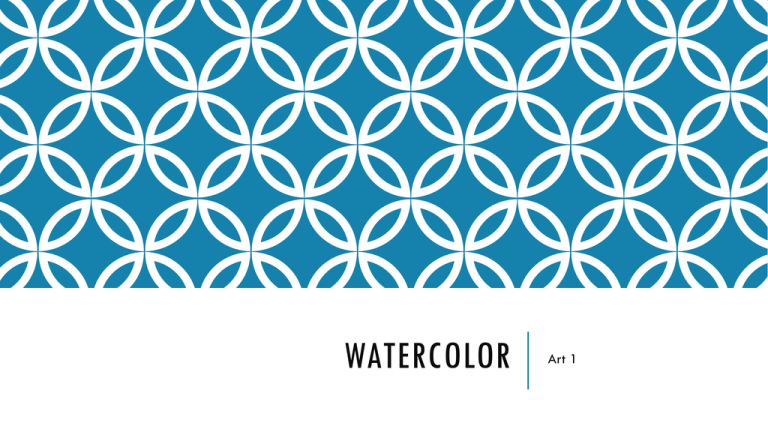
WATERCOLOR Art 1 VOCABULARY Binder - is what holds particles of pigments together in the paint tube and on the palette. Gum arabic is the binder used in the medium of watercolor. Bead - a tiny pool of color formed by gravity at the bottom of a wet wash when applied to tilted or slanted watercolor paper. Blocking in - arranging major elements of a painting using simple tone, shapes, colors and forms when beginning a watercolor painting. Block out - refers to reserving the white watercolor paper using any material (liquid or stencil) to prevent paint from making a mark on the paper. Buckling - the wrinkling and bending caused by expansion which occurs with watercolor paper when wet VOCABULARY Damp - in watercolor "damp" has several meanings. A "damp" brush is a brush that is moist enough to make a mark on paper but will not drip. Damp paper is limp from being moistened but when held at an angle the water will not run or drip. Hard edges - sharp shapes or lines that did not blend into adjacent areas. Soft edges - allowing the value or color of an edge to blend or blur into nearby areas without definite lines of separation. Soft edges happen when painting wet into wet or by blending off a brush stroke. Lift - to take out or remove paint from an area of a watercolor painting. Used to lighten values and colors by sponging, scrubbing, are scraping. Some lifting techniques are harmful to the paper surface. Blotting - lifting away moisture and pigment with an absorbent material (facial tissue, paper towel or sponge) used to lighten areas in a painting or to create special effects WASH Wash - a thin fluid application of watercolor on either wet or dry watercolor paper. A wash usually implies laying down color on a broad area of paper. Gradation - any gradual change in hue, value, or color intensity. Gradated Wash - a wash starting with one color gradually going from dark to light or light to dark Variegated wash - a wash starting one color gradually adding and blending into a second color in a single application on either wet or dry paper WASH EXAMPLES Gradated Wash Variegated Wash TECHNIQUES Dry Brush – almost opposite of wet in wet. A brush loaded with pigment (and not too much water) is drug over completely dry paper. Creates crisp and hard edges. You can go over with a brush to soften the edges. Good for creating texture. Wet on Dry – the application of a layer of color on top of a dry layer of color. This helps create clean crisp lines and overlapping colors can give you another color. Glaze - a transparent wash of color over another color modifying the underlying color. Wet in Wet – the application of wet paint onto wet paper. Also used to describe adding more color into an area of wet paint of the same or different color. Creates soft edges. Scumbling – the application of pigment onto dry paper. Good for creating texture. TECHNIQUE EXAMPLES Dry Brush Technique Glaze Technique Wet in Wet Technique TIME TO PRACTICE! 1. Put your name and class period on the top right corner of the watercolor paper. 2. Turn the paper over. 3. Divide the paper into 21 boxes; 7 rows and 3 boxes. 4. Label starting at the top and going left to right. Solid wash, graded wash, glazing Wet on wet, drop color on wet paper, dry brush Scumbling, negative painting, lift or feather out Pushing out pigment, wipe out brush, detail painting Masking fluid/tape, hard & soft edges, scratching wet & dry Magic eraser, salt, water splatter/blooms Sand paper/watercolor pencil, sponge, opaque vs. transparent VIDEOS Watercolor Part 1: http://www.youtube.com/watch?v=wbDawbOO8XY Watercolor Part 2: http://www.youtube.com/watch?v=lxK1dTJ4Nhk Watercolor Part 3: http://www.youtube.com/watch?v=lLOvMS2CmAI Watercolor Part 4: http://www.youtube.com/watch?v=ttbbXnQsMiw
